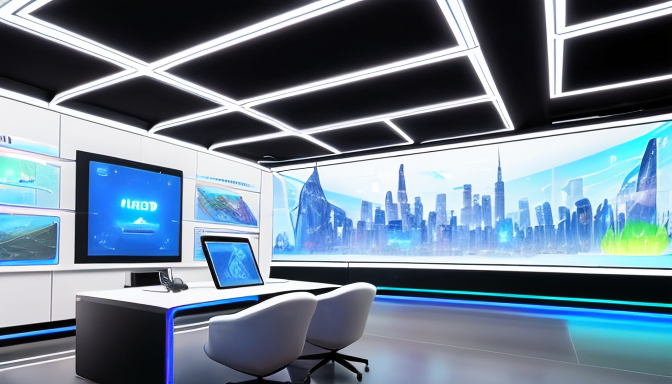This article explores innovative design techniques that can enhance your portfolio, making it stand out in a competitive market while showcasing your unique skills and creativity.
Have you ever wondered why some designs just click with you? That’s the magic of user-centered design. By putting the end-user at the forefront of your creative process, you’re not just creating pretty visuals; you’re crafting experiences that resonate. This approach ensures that your designs are not only aesthetically pleasing but also functional and relevant. Think about it: when you design with your audience in mind, you’re more likely to create something that truly meets their needs. This leads to a more impactful portfolio, showcasing your ability to connect with users on a deeper level.
In today’s fast-paced digital landscape, staying ahead of the curve is essential. Incorporating emerging technologies like Augmented Reality (AR), Virtual Reality (VR), and Artificial Intelligence (AI) into your projects can set you apart from the crowd. Imagine creating an interactive portfolio that allows potential clients to experience your designs in a whole new way! Not only does this showcase your adaptability, but it also highlights your forward-thinking approach. As technology evolves, so should your skills. By embracing these tools, you’re not just keeping up; you’re leading the charge in modern design.
In conclusion, mastering design fundamentals and exploring advanced techniques through step-by-step guides and expert insights can radically transform your portfolio. Remember, it’s not just about what you create; it’s about how you make people feel when they interact with your work. So, are you ready to take your portfolio to the next level?
Embracing User-Centered Design
When it comes to design, user-centered design is like the secret sauce that makes your portfolio truly shine. Imagine crafting something that not only looks good but also feels good to the user. It’s about putting yourself in their shoes and understanding their needs, desires, and pain points. This approach transforms your designs from mere visuals into meaningful experiences that resonate deeply with your audience.
To get started, you might want to dive into the fundamentals of design. Think of it as building a solid foundation for a house. Without a strong base, everything else is at risk. Here are some key principles to keep in mind:
- Empathy: Understand the user’s journey. What challenges do they face? What do they love?
- Feedback: Always seek input from real users. Their insights can guide your revisions and improvements.
- Prototyping: Create mock-ups to visualize your ideas. This helps in refining your concepts before finalizing them.
By integrating these techniques, you’re not just creating designs; you’re crafting solutions. This approach not only enhances user satisfaction but also showcases your unique skills and creativity, making your portfolio stand out in a crowded market. Remember, every design decision should echo the voice of the user. So, are you ready to embrace this game-changing technique?

Incorporating Emerging Technologies
In today’s fast-paced design world, embracing emerging technologies is not just a trend; it’s a necessity. Imagine walking into a gallery where your designs leap off the screen, engaging viewers in ways they’ve never experienced before. This is the magic of technologies like Augmented Reality (AR), Virtual Reality (VR), and Artificial Intelligence (AI). These tools can transform your portfolio from ordinary to extraordinary, showcasing not just your skills but also your ability to innovate.
For instance, integrating AR can provide an interactive layer to your designs, allowing clients to visualize products in their own space. It’s like giving them a sneak peek into the future! On the other hand, VR can immerse users in a fully realized environment, making your designs not just something to look at, but something to experience. And let’s not forget about AI, which can help automate tedious tasks, allowing you to focus on what you do best—creating.
To truly stand out, consider these key technologies:
- Augmented Reality (AR): Enhance user engagement by blending digital elements with the real world.
- Virtual Reality (VR): Create immersive experiences that captivate and inspire.
- Artificial Intelligence (AI): Utilize smart tools for design predictions and automation.
By mastering these technologies, you not only elevate your projects but also position yourself as a forward-thinking designer in a competitive market. So, are you ready to take your portfolio to the next level and leave your mark on the design world?
Frequently Asked Questions
- What is user-centered design?
User-centered design is all about putting the user first. It means creating designs that are tailored to the needs and preferences of your target audience. By focusing on the user experience, your portfolio can showcase designs that truly resonate with people, making your work more impactful.
- How can emerging technologies enhance my design portfolio?
Incorporating technologies like Augmented Reality (AR), Virtual Reality (VR), and Artificial Intelligence (AI) can set your portfolio apart. These tools not only demonstrate your technical skills but also show that you’re adaptable and forward-thinking, which are essential traits in today’s design landscape.
- Why is it important to stand out in a competitive market?
In a sea of talented designers, standing out is crucial to attract potential clients or employers. A unique portfolio that highlights your creativity and innovative techniques can make a lasting impression, helping you get noticed and land the opportunities you desire.